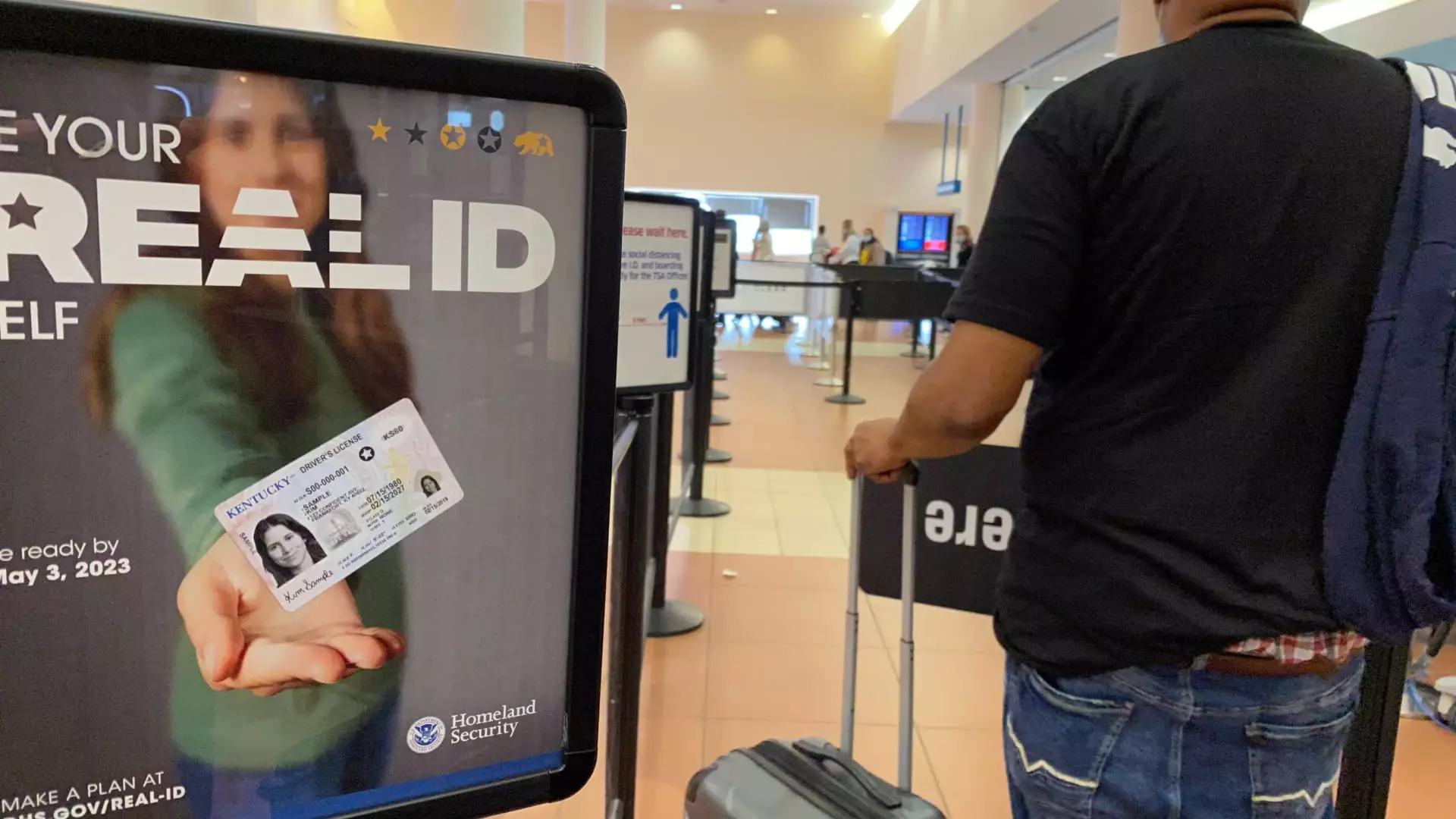As the date approaches, the impending enforcement of the Real ID requirements looms larger among travelers. This isn’t just another bureaucratic notion; it’s a pivotal shift that affects millions of individuals each year. Come May 7, 2023, the Transportation Security Administration (TSA) will officially begin enforcing the Real ID Act. Anyone hoping to board a domestic flight without the correct identification will find themselves facing a stark reality: they may not get past security. This initiative, birthed out of the tragedy that was September 11, 2001, serves as a reminder of how security measures evolve in a world where vulnerability exists.
Contrary to what some might expect, only a staggering 81% of travelers currently possess Real ID-compliant identification. While that number may sound favorable, it speaks volumes about the remaining 19% who carry conventional identification. One must wonder, what about the last-minute travelers, the busy professionals, and families rushing to book a flight? They’ve been given scant notice to ensure their IDs are compliant. The rush is on, yet many are left scrambling, amplifying anxiety in an already chaotic travel infrastructure.
Government Responsiveness or Red Tape?
This situation raises immediate questions about the government’s role. Have they truly done an adequate job in preparing the public for such a significant transition? Year after year, the deadline was pushed back, ostensibly to give states and citizens more time to comply. Yet, one might argue this approach has bred apathy and lackadaisical behavior among travelers. The opportune moment for public awareness has been squandered, leaving an uncomfortable tension in the air just before the enforcement. It begs the question: Why weren’t dedicated campaigns launched far in advance to spur proactive engagement?
Local officials, such as John Essig, the federal security director for New York City-area airports, continually urge citizens to address their Real ID needs as quickly as possible. While it’s commendable that they’re attempting to alert travelers now, would it not have been more beneficial to have increased outreach efforts from the onset? A proactive stance in public relations could have reshaped the narrative and empowered travelers instead of making them feel cornered at the last minute.
What Lies Beneath the Surface of Compliance
Let’s face a harsh reality: obtaining a Real ID isn’t exactly an easy feat. With appointments at motor vehicle departments becoming scarce, one must ask how consistently accessible these necessary services are. It’s reminiscent of the trials faced during the height of the COVID-19 pandemic, where limited availability and long wait times became the norm. Such systemic inefficiencies not only harm the public’s trust in governmental systems but also reveal an underlying issue about resources allocated to crucial citizen services. Efficient public service should not be a privilege.
Moreover, the contrast in state compliance is glaring. Here we have states where the implementation has been seamless, while others flounder under bureaucracy and red tape. This inconsistency could create a situation where individuals from one state face significantly less scrutiny at checkpoints, as opposed to those from a more lax environment. Justice and fairness should transcend borders, but are they being upheld through this fragmented identification system?
The Real Implications for Travelers
The stark truth that every traveler should comprehend is that failure to adhere to the Real ID requirements could mean subjecting oneself to delays, additional screening, or even being barred entry at checkpoints. In an age where convenience often dictates travel plans, many will find themselves stuck in a quagmire of identity verification, all because they neglected to read the fine print or respond to government communications. The irony is palpable; travelers who may already be stressed about logistics are now expected to undergo a stressful process to prove their identity at security.
TSA spokesperson Carter Langston succinctly articulated the gravity of the situation when he emphasized that “identity verification is a lynchpin in security.” What’s disheartening is that the safety of thousands now hinges upon the ability of individuals to procure a specific form of identification on time. It’s a terrifying reminder that our freedom to travel is intertwined with our compliance with ever-evolving regulations, all under the guise of increased security.
In essence, as we march towards the May 7 deadline, it becomes crystal clear that this isn’t merely a trivial matter of paperwork—that compliance speaks to broader themes of governmental responsibility, traveler rights, and societal equity. Travelers must arm themselves with knowledge and a Real ID, not merely as an obligation, but as a means to reclaim their sense of autonomy in this convoluted landscape of modern travel.

